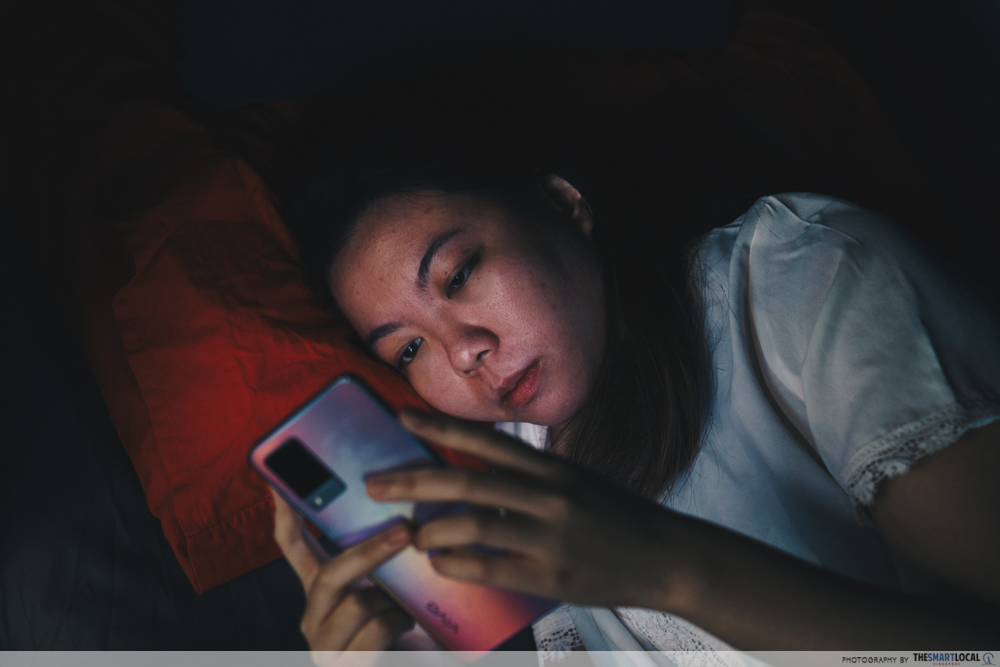Migraine Facts
Compared to my girlfriends who consider themselves “seasoned migraineurs”, I’ve only experienced mild headaches that subside after a while. I never understood the debilitating pain that comes with migraines, but I’ve noticed they tend to happen to women much more often than men. Interesting.
To find out why, I spoke to Dr Tu Tian Ming, a neurologist from Neurology Care Partners at Mount Elizabeth Medical Centre, to learn the reason behind such observations, and how to better avoid migraines, so that you can also better avoid having searing pains without warning.
Contents
1. Migraines are different from headaches
 For illustrative purposes only
For illustrative purposes only
Don’t be too quick to dismiss the pain in your head as simply headaches ‒ they might very well be migraines.
Unlike headaches, which feel like bands of tension around your forehead, migraines are neurological diseases that recur over time. Simply put, migraines originate from the brain, and the pain typically appears on one side.
Dr Tu explained that “migraines normally come with a throbbing sensation, as if your blood vessels are pulsating in your head.” Nausea is one of the main symptoms, and patients also feel overwhelmed and very disturbed by loud noises and light during an attack.
2. Hormones cause women to experience migraines more often than men
 For illustrative purposes only
For illustrative purposes only
Let’s face it ‒ being a woman is rough. Besides suffering from monthly period cramps, women are more likely to experience migraines twice as often as men. Scientific evidence has shown that hormonal changes, particularly during the menstrual cycle, are known migraine triggers.
“Many of my patients come to me either pre-or post-menses, and they always ask me the reason behind it,” Dr Tu shared. “Unfortunately, the fluctuation of the estrogen and progesterone are the hormones that trigger the migraine.”
Interestingly, Dr Tu revealed that he also had female patients who stopped experiencing migraines when they were pregnant.
“When women are pregnant, their hormone levels become more stable. In fact, they have very high progesterone levels, and the estrogen decreases and remains stable throughout the pregnancy.”
 For illustrative purposes only
For illustrative purposes only
While hormones are a significant trigger for migraines, 80% of the occurrences are actually caused by emotional and social stress.
“Facing your boss, having an exam, and going for an interview are examples of emotional stress that people undergo,” Dr Tu said. “It could also be family, personal, and relationship issues.”
To help prevent migraines, patients can try to manage these triggers by staying calm and practicing meditation.
4. Seeking a specialist can help you better understand the cause of migraines
 For illustrative purposes only
For illustrative purposes only
Admit it ‒ you’re one of those who prefer to wait out a health condition before actually seeking professional help. While this approach is common among migraine sufferers, Dr Tu recommends visiting a GP before seeking a specialist like himself.
“I think patients with any form of headaches should see a GP first because GPs are the first step for triage,” Dr Tu shared. “When GPs refer patients to specialists, it is because they don’t have the necessary tools or need a specialist’s input.”
If you’re wondering about the differences, specialists offer detailed diagnoses, and develop various solutions to alleviate migraines.
“I’d recommend that patients start a migraine diary and note their surroundings whenever an attack happens,” Dr Tu suggested. “This helps them to notice any patterns in their migraines, allowing us to identify triggers.”
That being said, treating migraines takes time and effort. It doesn’t end with just one visit, and you may need to return to the specialist for follow-up treatments.
Also read:
5 Female Millennials Share Their Decade-Old Photos & What They Learnt About Turning 30
5. Understanding and managing your triggers help lessen the frequency of migraines
 For illustrative purposes only
For illustrative purposes only
Once you’ve identified your triggers for migraines with the help of a specialist, the next step is to adopt a healthy lifestyle that prevents them from occurring.
“I had a patient who was very sensitive to heat,” Dr Tu said. “But since she couldn’t escape from Singapore’s hot and humid weather, she tried her best to keep herself cool and hydrated. Her efforts eventually paid off, reducing her migraine attacks.”
For some patients, exercising helps relieve migraines, while others might find that having quiet time by themselves is a great way to lessen their frequency. Either way, you can choose to improve your health by incorporating new habits in your lifestyle.
6. Migraines reduce the quality of life when not treated
 For illustrative purposes only
For illustrative purposes only
While migraines are not life-threatening, they reduce the quality of life when left untreated. They make it harder to focus on daily tasks, enjoy activities with our loved ones, and even rest. This once again highlights the importance of seeking professional help, and identifying the causes of migraines to eliminate any discomfort you may face.
7. There are medications to avoid migraines
 For illustrative purposes only
For illustrative purposes only
Painkillers are familiar medications for migraine sufferers, but beyond these pills, other types of medicines relieve migraines, especially when women experience them during their monthly menstruation.
“CGRP (Calcitonin gene-related peptide) is a new class of medications recently introduced for migraine sufferers,” Dr. Tu shared. “These medications not only help prevent migraines from worsening, but also treat them after they have developed.”
“When other methods don’t work for a patient, we can look into prescribing short-term medications called mini prophylaxis, which prevents migraines from occurring during the menstrual cycle,” Dr Tu explained.
In most cases, patients barely experience side effects, and at most, they may feel a bit constipated or have a runny nose.
“The medicines do not affect the menstrual cycle at all, and are very safe to consume,” Dr Tu said.
8. 1 in 10 people suffer from migraines
 For illustrative purposes only
For illustrative purposes only
Compared to medical issues like diabetes and heart attacks, migraines are not commonly identified as a “serious” health problem. However, you might be surprised to know that 1 out of 10 people suffer from migraines.
As such, Dr Tu believes that more can be done to raise awareness of migraines, especially in workplaces.
“I always encourage patients with migraines to have their family members come along for a consultation because I need to inform them that this condition is real,” Dr Tu said. “This way, they can understand what the patient is going through and how they can help as family members.”
At the same time, Dr Tu also shares the sentiment that many women tend to downplay their migraine symptoms just because they don’t wish to appear problematic. One way to address such issues is to raise awareness by educating people about migraines.
These Migraine Facts Show You Don’t Have To Suffer Alone
In today’s society, migraines are often brushed away as mere headaches, and there is a lack of empathy towards those who suffer from this medical condition. Through the aforementioned migraines facts, we hope that more people will become aware of the effects migraines can cause.
If you’re looking to learn more about migraines and how you can help those who suffer from them, visit the official Migraine & Headache Awareness Month website.
Cover: TheSmartLocal
Also read:
6 Acne Myths Busted By A Dermatologist & How To Properly Care For Them








